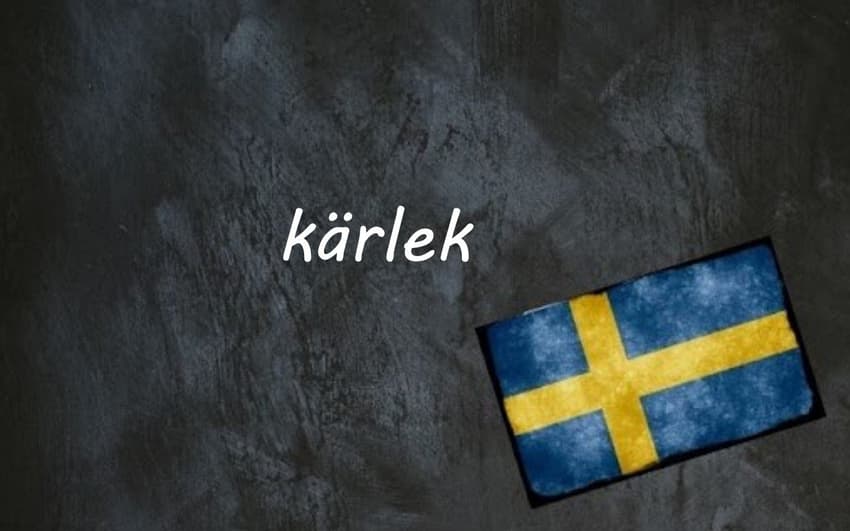Swedish word of the day: kärlek

The day after Valentine's Day, let's take a look at the long history of the Swedish word for love.
To say "I love you" in Swedish, you can say jag älskar dig or jag är kär i dig, the second of which literally means "I'm in love with you".
The verb "to love" is älska in Swedish, while the noun "love" is kärlek. Note: watch out for prepositions. In English you talk about "love for someone", but in Swedish you'd say kärlek till någon ("love to someone").
The word kär has been around in the Nordic languages for centuries and centuries, and is related to the French term cher (dear), which itself comes from the Latin carus, meaning "precious" or "expensive" and came to be used as a term of affection about people who were precious or dear to the writer/speaker.
That's why you could in theory begin letters to friends and relatives with the word kära, for example kära mamma or kära Martin. In practice, however, this is much less common than "Dear so-and-so" in English; in Swedish, a simple hej (hello) at the start of a letter usually suffices.
You can also use phrases like (min) kära mamma in speech ("my dear mother" or "mother dear").
Meanwhile, English "dear" is used as a term of affection (and in some dialects, means "expensive") while the related word dyr in Swedish only means "expensive" in terms of price. French cher continues to have both meanings.
So where does the lek in kärlek come from? Lek means "game" in today's Swedish, but many years ago it had a broader meaning, often referring to dance, sport, or other quick movements. So the noun kärlek comes from the idea of strong, turbulent emotions produced by love.
Examples
Min kärlek till dig är som en brinnande eld
My love for you is like a burning fire
Hur vet man att det är äkta kärlek?
How do you know if it's true love?
Comments
See Also
To say "I love you" in Swedish, you can say jag älskar dig or jag är kär i dig, the second of which literally means "I'm in love with you".
The verb "to love" is älska in Swedish, while the noun "love" is kärlek. Note: watch out for prepositions. In English you talk about "love for someone", but in Swedish you'd say kärlek till någon ("love to someone").
The word kär has been around in the Nordic languages for centuries and centuries, and is related to the French term cher (dear), which itself comes from the Latin carus, meaning "precious" or "expensive" and came to be used as a term of affection about people who were precious or dear to the writer/speaker.
That's why you could in theory begin letters to friends and relatives with the word kära, for example kära mamma or kära Martin. In practice, however, this is much less common than "Dear so-and-so" in English; in Swedish, a simple hej (hello) at the start of a letter usually suffices.
You can also use phrases like (min) kära mamma in speech ("my dear mother" or "mother dear").
Meanwhile, English "dear" is used as a term of affection (and in some dialects, means "expensive") while the related word dyr in Swedish only means "expensive" in terms of price. French cher continues to have both meanings.
So where does the lek in kärlek come from? Lek means "game" in today's Swedish, but many years ago it had a broader meaning, often referring to dance, sport, or other quick movements. So the noun kärlek comes from the idea of strong, turbulent emotions produced by love.
Examples
Min kärlek till dig är som en brinnande eld
My love for you is like a burning fire
Hur vet man att det är äkta kärlek?
How do you know if it's true love?
Join the conversation in our comments section below. Share your own views and experience and if you have a question or suggestion for our journalists then email us at [email protected].
Please keep comments civil, constructive and on topic – and make sure to read our terms of use before getting involved.
Please log in here to leave a comment.